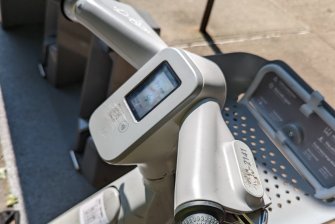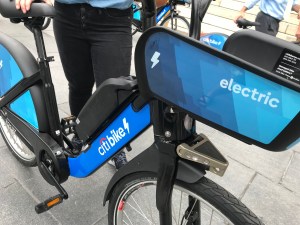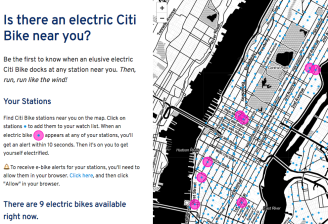Setback for Citi Bike as Entire E-Bike Fleet is Grounded

It’s an e-saster.
Citi Bike announced early Sunday that it would pull all its popular pedal-assist bikes off the road after reports that some riders had experienced “stronger than expected braking force on the front wheel.”
The bikes started disappearing off the Citi Bike map earlier this weekend, but the Lyft-owned company issued a “service update” to its 150,000 members on Sunday at 5 a.m. after Streetsblog inquired about the missing electric-assist bikes late Saturday night.
“After a small number of reports and out of an abundance of caution, we are proactively pausing our electric bikes from service,” spokeswoman Julie Wood said. “Safety always comes first.”
I didn't report it, but I fractured my arm flipping over the handlebars when trying to brake for a pedestrian in the bike lane. Unfortunate to hear but I feel better knowing I wasn't the only one this happened to. And yes I know how disc brakes work…
— elliott romano (@ElliottRomano) April 14, 2019
Citi Bike was expected to deploy 4,000 of the speedsters by June, but said only about 1,000 of the bikes had made it to the streets. Those bikes will be replaced by non-pedal assist bikes, which Citi Bike refers to as the “classic” model.
When the company announced the expansion, it justified the additional $2-per-ride cost of a pedal assist bike due to the increased maintenance effort of swapping out batteries. Annual members were able to take out electric Citi Bikes for no additional charge until April 27, though Wood said that the date may be extended after all the e-bikes return to the street.
Citi Bike announced in November that it would expand its 12,000-bike fleet to 40,000 bikes over the next five years. It is unclear how that expansion is going. No neighborhoods have been named as the lucky recipients of the new e-bikes or “classic” Citi Bikes. Currently, the system operates only in Manhattan below 130th Street, a thin strip of Western Queens and a crescent of Brooklyn from Greenpoint through Downtown to Park Slope.
The city does not provide any subsidy to Citi Bike, unlike any other form of public transportation. The system carries far more riders than the mayor’s ferry system, for example, which gets millions in city support. Each ride on an NYC Ferry costs riders $2.75, but costs taxpayers more than $10. On an average day, Citi Bike serves tens of thousands of riders.
Also on Sunday, other Lyft-owned systems — such as in DC and the San Francisco bay area — withdrew their e-bikes. Capital Bikeshare only charged $1 per e-ride on a pedal-assist bike — free for members. But the membership charge was about to kick in on Monday. San Francisco’s Ford GoBike system was about to launch a new bike type. It is unclear if that will happen on schedule.
This is a breaking story — and a braking story — so check back for updates. For now, here is the full statement from Citi Bike. (Capital Bikeshare and GoBike put out essentially the same statement):
Since Citi Bike first deployed pedal-assist bikes last year, riders have taken hundreds of thousands of rides and shared with us incredibly helpful and overwhelmingly positive feedback.
However, we recently received a small number of reports from riders who experienced stronger than expected braking force on the front wheel. Out of an abundance of caution, we are proactively removing the pedal-assist bikes from service for the time being. We know this is disappointing to the many people who love the current experience — but reliability and safety come first.
We have been hard at work on a new pedal-assist bike, and are excited to bring that to you soon. The new bike model will be accessible just by scanning a QR code and overall will be more fun to ride. In the meantime, we will quickly replace the pedal-assist bikes with classic pedal bikes.
Thank you for being a member of our community.




